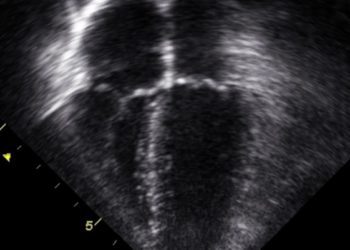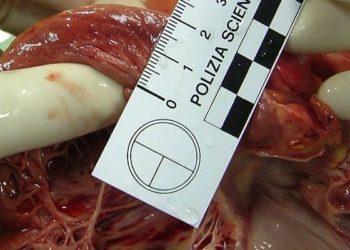Sacubitril or valsartan versus standard medical therapies in patients with heart failure with preserved ejection fraction: PARALLAX trial
1. In this randomized, controlled trial, for patients with heart failure and left ventricular ejection fraction higher than 40%, sacubitril/valsartan treatment compared with standard medical therapy resulted in a significantly greater reduction in plasma N-terminal pro-brain natriuretic peptide levels at 12 weeks.
2. However, there was no significant improvement from baseline 6-minute walk distance at 24 weeks between the treatment groups.
Evidence Rating Level: 1 (Excellent)
Study Rundown: In patients with heart failure with preserved ejection fraction (HFpEF), the therapeutic effects of sacubitril/valsartan compared to standard medical therapy on surrogate outcome markers such as N-terminal pro-brain natriuretic peptide (NT-proBNP) concentration and submaximal exercise capacity is unclear. This trial, PARALLAX, sought to test the hypothesis that sacubitril/valsartan was more effective than background medication-based individualized comparators in the reduction of NT-proBNP levels and improving submaximal exercise capacity and quality of life in patients with chronic heart failure and a left ventricular ejection fraction (LVEF) higher than 40%. The primary endpoints were change from baseline plasma NT-proBNP level at week 12 and the 6-minute walk distance at week 24. Secondary outcomes included change from baseline quality-of-life measures and New York Heart Association (NYHA) class at 24 weeks. Among 2,572 patients with HFpEF, treatment with sacubitril/valsartan vs standard treatment with enalapril, valsartan, or placebo resulted in a statistically significant reduction in plasma NT-proBNP levels at 12 weeks but no significant change the 6-minute walk distance at 24 weeks. Further research is warranted to assess the specific clinical benefits of sacubitril/valsartan in this patient population. A limitation of this study was that it did not include a run-in therapeutic phase resulting in smaller between-group differences as patients who were intolerant of target drug dosages caused dilution.
Click to read the study in JAMA
Click to read an accompanying editorial in JAMA
Relevant Reading: Effects of sacubitril/valsartan on N-terminal Pro-B-type natriuretic peptide in heart failure with preserved ejection fraction
In-Depth [randomized controlled trial]: This randomized, double-blinded, parallel group clinical trial enrolled 2,572 patients (mean age [SD], 72.6 [8.5] years; 1,301 [50.7%] women) with HFpEF from 396 centers in 32 countries between August 2017 and October 2019. At baseline, all patients had a LVEF higher than 40%, elevated NT-proBNP levels, and structural heart disease. Patients were randomized 1:1 to sacubitril/valsartan (n = 1,286; baseline median NT-proBNP levels, 786 pg/mL) vs standard treatment with enalapril, valsartan, or placebo (n = 1,286; baseline median NT-proBNP levels,760 pg/mL). Among 2,240 (87.1%) participants who completed the trial, patients in the sacubitril/valsartan group (adjusted geometric mean ratio to baseline, 0.82 pg/mL) had a significantly greater reduction in NT-proBNP levels than individuals in the comparator group (adjusted geometric mean ratio to baseline, 0.98 pg/mL) with an adjusted geometric mean ratio of 0.84 (95%CI, 0.80 to 0.88; P < .001) after 12 weeks of treatment. At week 24, no significant difference in median change from baseline in the 6-minute walk distance was observed, with an increase of 9.7 m vs 12.2 m (adjusted mean difference, -2.5 m; 95%CI, -8.5 to 3.5; P = .42). Furthermore, there was no significant difference in the mean change in the Kansas City Cardiomyopathy Questionnaire clinical summary score (12.3 vs 11.8; mean difference, 0.52; 95%CI, -0.93 to 1.97) or improvement in NYHA class (23.6% vs 24.0% of patients; aOR, 0.98; 95%CI, 0.81 to 1.18). The most frequent adverse events in the sacubitril/valsartan group vs the standard treatment group were hypotension (14.1% vs 5.5%), albuminuria (12.3% vs 7.6%), and hyperkalemia (11.6% vs 10.9%).
Image: PD
©2021 2 Minute Medicine, Inc. All rights reserved. No works may be reproduced without expressed written consent from 2 Minute Medicine, Inc. Inquire about licensing here. No article should be construed as medical advice and is not intended as such by the authors or by 2 Minute Medicine, Inc.







